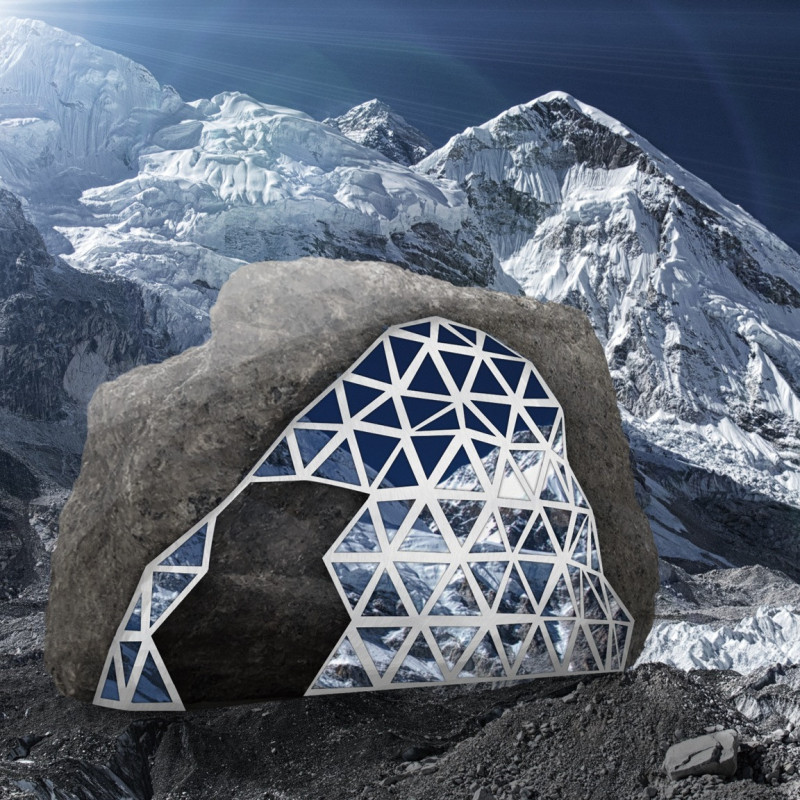5 key facts about this project
Boulder Point serves as a necessary addition to the striking landscape of Mt. Everest. It offers toilet facilities for climbers journeying through this challenging terrain. More than just a functional space, the design invites users to connect with the natural surroundings, highlighting the importance of enjoying the experience of climbing rather than focusing solely on reaching the summit.
Architectural Form
The design features triangular panels that echo the shape of a large boulder. This form helps the structure blend into the rugged setting. By mimicking natural geological shapes, the design minimizes visual impact and enhances the sense of space. The stone acts as a structural support, which reduces the need for extra panels while ensuring stability.
Material Application
The choice of materials serves both aesthetic and practical purposes. Mirrors cover the exterior walls, reflecting the surrounding views of Mt. Everest. This reflection not only helps the facility blend in but also creates a connection between climbers and their environment. Alongside this, the use of reflectorized glass allows users to enjoy distant views from within the facilities, bringing nature closer even when inside.
Functional Layout
Inside, the two-story setup separates waste disposal areas from user access paths. This arrangement addresses common concerns about privacy in restroom facilities, especially in remote locations. By keeping these areas distinct, the design promotes comfort and hygiene for climbers, allowing them to use the facilities with ease.
In focusing on user experience, the design encourages climbers to appreciate their surroundings. With features that promote interaction with the landscape, the facility turns a necessity into a moment of engagement with nature. This focus on quality design enhances the overall experience of being in the breathtaking environment of Mt. Everest.



















































